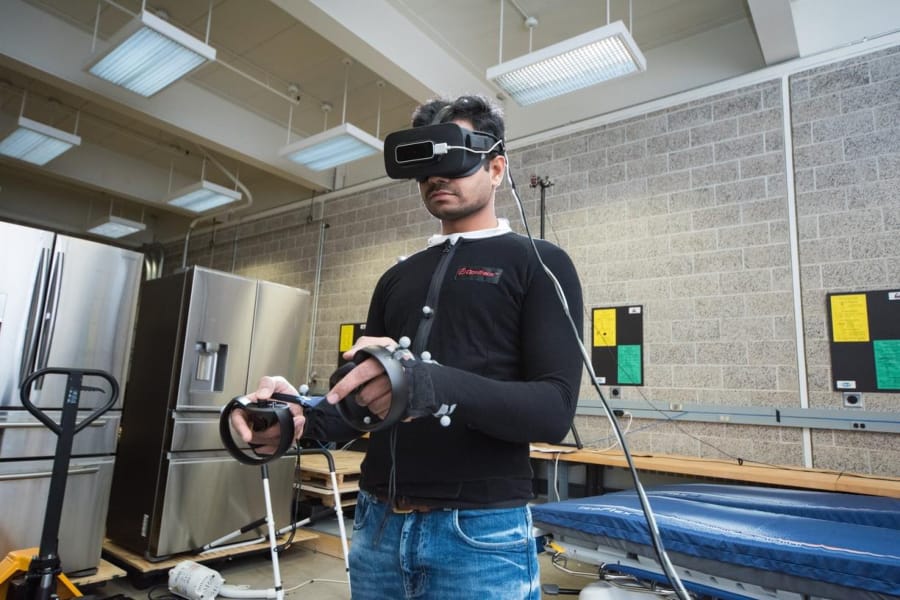EUGENE, Ore. — Some common virtual reality movements contribute to muscle strain and discomfort, according to a recent Oregon State University study. The work is an effort to ensure user safety in a technology that is used not only for gaming, but also education and industrial training.
“There are no standards and guidelines for virtual and augmented reality interactions,” researcher Jay Kim of OSU’S College of Public Health and Human Sciences said in a news release.
Virtual reality users wear a headset and engage in full-body, three-dimensional movements – unlike conventional computer users, where a desk or the arms of a chair offer some level of support for the hands and arms.
With sensors placed on participants’ joints and muscles, researchers used motion capture to record their movements and electromyography to measure electrical activity in their muscles while performing common VR gestures. Wearing an Oculus Rift VR headset, participants were tasked with either pointing to specific dots around a circle, or coloring in a certain area with their finger.



